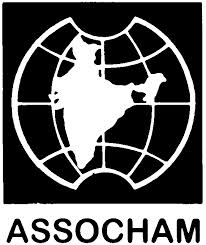The advent of festive season has brought mixed results for corporate sector as the net profit of India Inc. surged by 15 per cent in the second quarter (Q2) i.e. during July-September of the ongoing financial year 2013-14 (FY14), according to a just-concluded ASSOCHAM study on corporate performance.
“There has been a marginal year-on-year (Y-o-Y) decline of 1.8 per cent in the rate of growth of net profit mainly due to slow macroeconomic conditions both domestically and globally,” according to an eco-pulse study titled, ‘Performance Trends of India Inc in 2013: Q2,’ conducted by The Associated Chambers of Commerce and Industry of India (ASSOCHAM).
“Substantial cut in total expenses has resulted in limited moderation in profits and though there has been a decline in both expenditure and sales, the rate of decline in expenditure is higher than rate of decline in sales which led to this meagre 1.8 per cent fall in total profits,” highlighted the study prepared by The ASSOCHAM Economic Research Bureau (AERB).
“Though the general trend indicates that both top lines and bottom lines of corporate India either remained indifferent or have shown a mellowed performance, however, certain firms across sectors remained unfazed and successfully weathered the slow economic conditions to register impressive growth figures,” further added the ASSOCHAM study.
“Large Indian corporate firms have benefitted by cheap imported raw material as raw material prices remained down in global markets, besides cheap cost of credit raised in foreign markets has also proved lucrative for them,” said Mr D.S. Rawat, secretary general of ASSOCHAM while releasing the chamber’s study. “However, rupee depreciation against
major currencies on one hand negated certain positive effects in case of import dependent firms and on the other it also favoured export-intensive units.”
While growth in net sales declined by about two per cent Y-o-Y, the cost of raw materials have also dipped as companies have adopted efficient cost-management systems. Besides, interest payments have also gone southwards, further highlighted the ASSOCHAM study.
The manufacturing sector has continued to stay under pressure as net sales dipped from 14 per cent to 12.8 per cent while growth in total expenditure declined from 15.8 per cent to 11.8 per cent and even profit rates have declined by 3.9 per cent during the aforesaid period. “The underlying explanation is that as borrowing of firms increased, interest payments too increased by 13.8 per cent.”
On the services sector front, the ASSOCHAM study has highlighted a very moderate uptick in net sales and total expenses has been registered. Besides considering that services sector performance is linked to industrial activity by way of derived demand, there has been continued moderation in growth of net sales in the recent past thereby indicating
poor domestic industrial sector performance and uncertain global economic conditions.
“There has been healthy growth of over 33 per cent in the quarter upto September 30 as compared to 24.7 per cent registered a year ago which is explained by price realization and exchange depreciation.”
A declining trend in growth rate of net sales has been registered in the banking and financial services sector. The segment has also witnessed fall in rate of growth of interest payments, while growth rate of profits for the sector reduced from 24.8 per cent to 22.1 per cent.
The information technology (IT) sector has shown some immunity to the current slowdown as the sector has witnessed rise in net sales growth from 27.6 per cent to 33.5 per cent, besides the sector has also registered a rise in total expenditure from 24.8 per cent to 30.8 per cent. While growth in interest payments has become negative, growth rate in total profits has registered an increase from 25.3 per cent to 37 per cent, highlighted the ASSOCHAM study.
ASSOCHAM has strongly recommended for need of a paradigm shift in government’s approach as cheap imports of various manufactured goods like electronics, chemicals and steel are resulting in domestic manufacturers to lower capacity utilization rates, leave alone adding new capacities.
“The need of the hour is to announce a short term policy action to address current sectoral growth hurdles, besides various governments and ministries must act in unison to put together effective policy measures to address this phenomenon,” Mr Rawat. “Both the government and monetary authority need to focus on boosting manufacturing sector as that is the only feasible solution for the current state of economy.”
“The Reserve Bank of India (RBI) must ensure availability and cost of finance to end-user become competitive without any further delay, besides swift policy action for reviving investments and business confidence must be initiated to ensure a strong supply response,” further said the ASSOCHAM secretary general.
“The upcoming quarterly monetary policy review must not resort to interest rate tightening, as it would further push up the prices,” he added.

